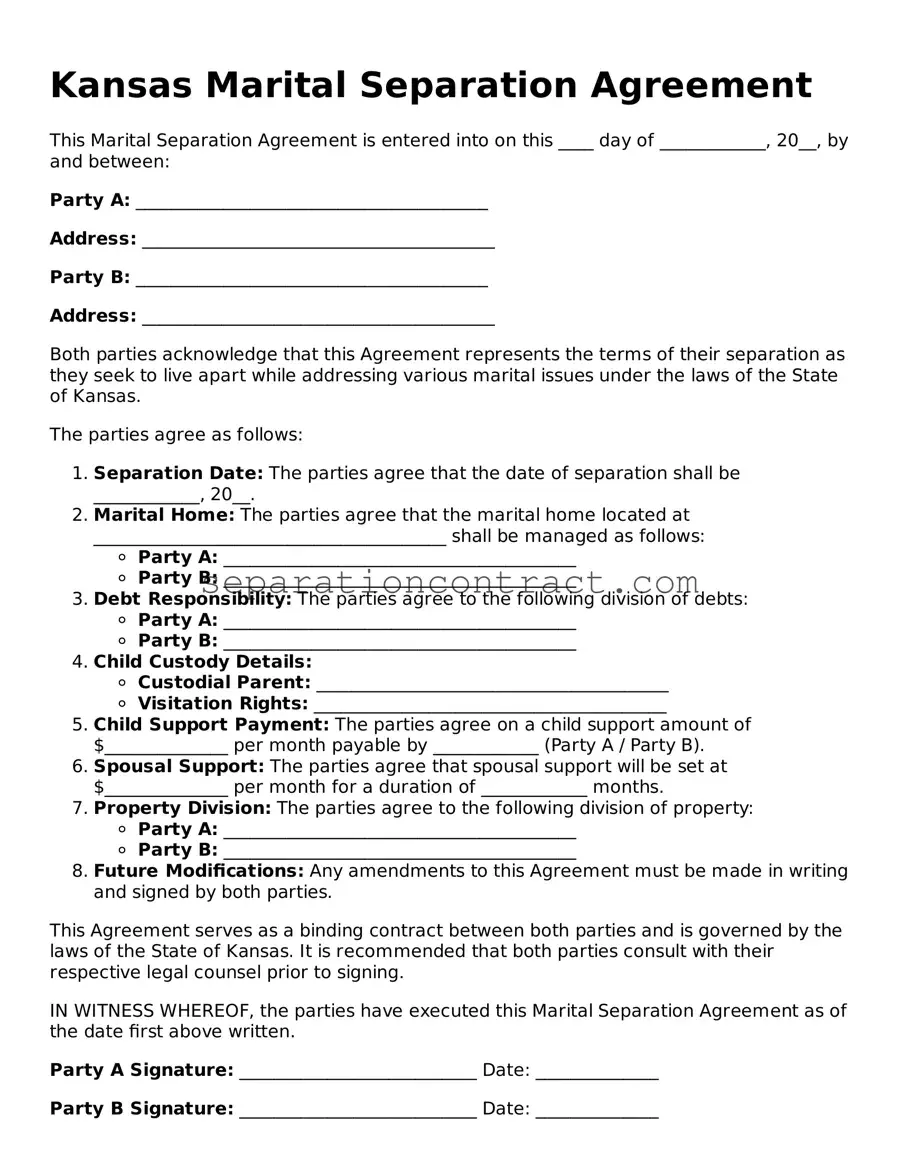Valid Marital Separation Agreement Form for the State of Kansas
A Kansas Marital Separation Agreement is a legal document that outlines the terms and conditions agreed upon by spouses who wish to live separately while remaining legally married. This agreement can cover various aspects, including property division, child custody, and support obligations. Understanding this form is crucial for ensuring both parties' rights are protected during the separation process.
To get started on your Kansas Marital Separation Agreement, click the button below to fill out the form.
Fill Out Your Form Online
